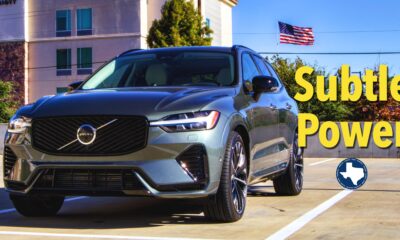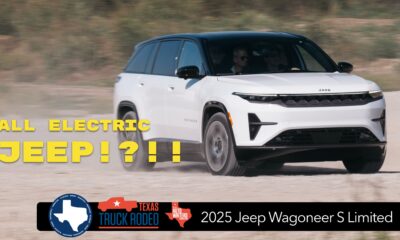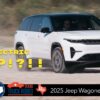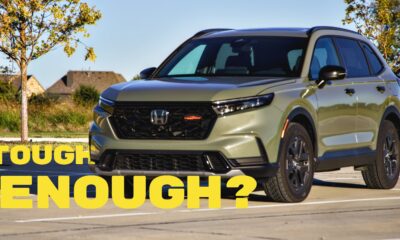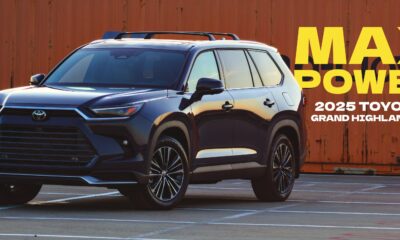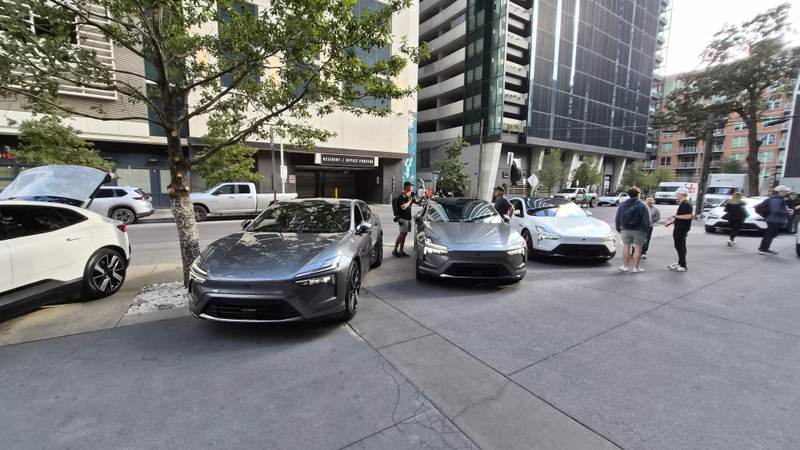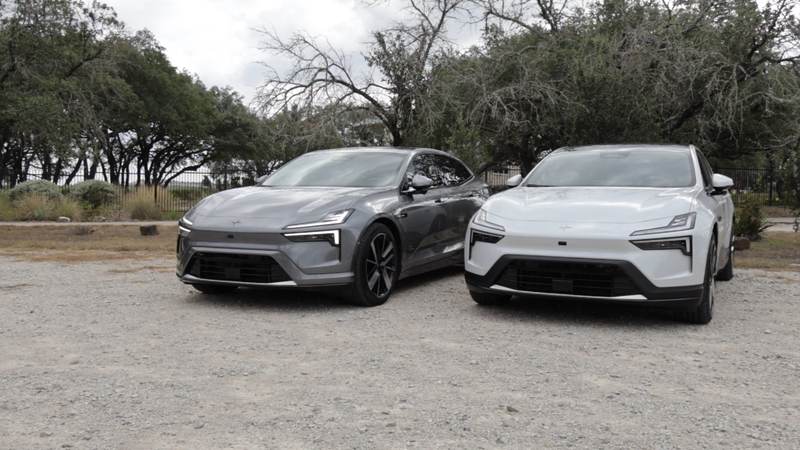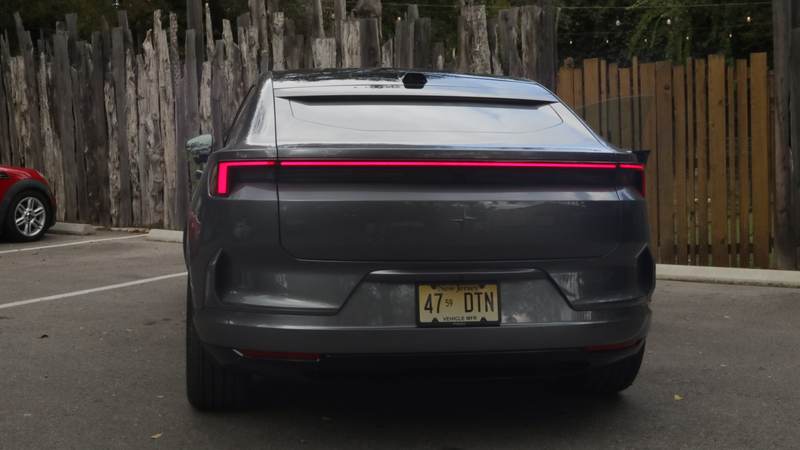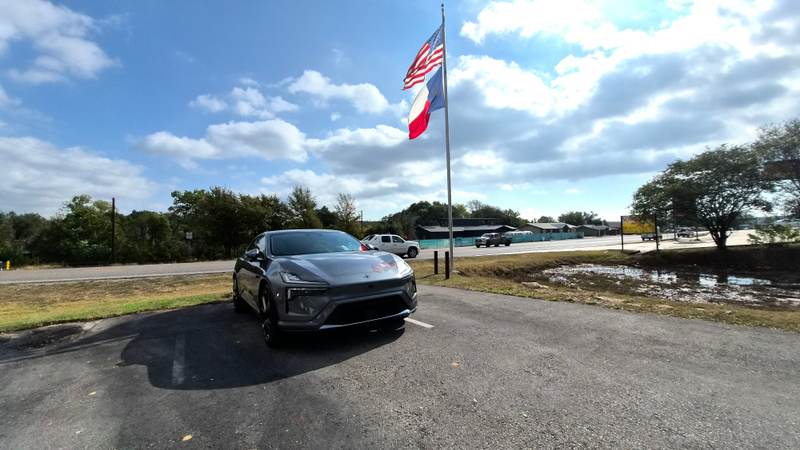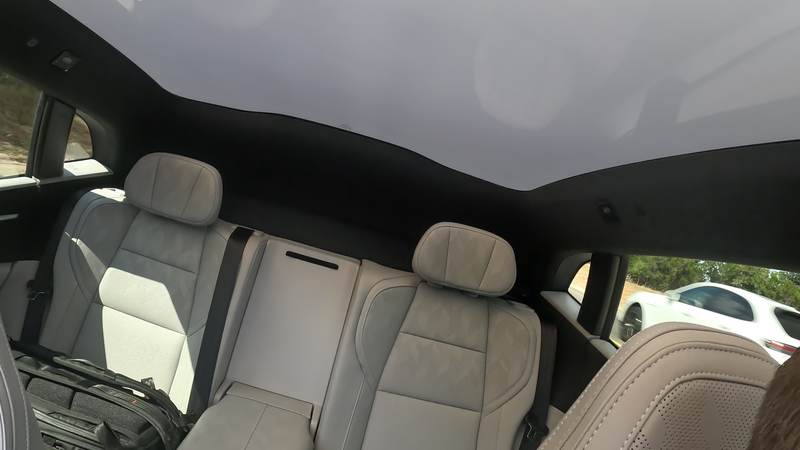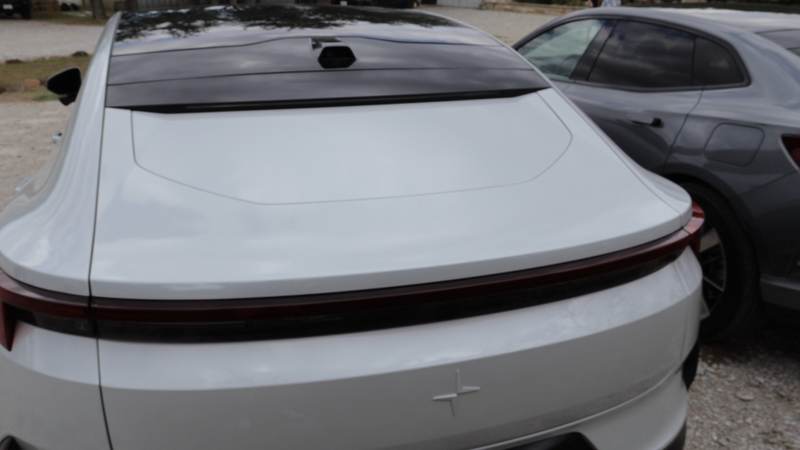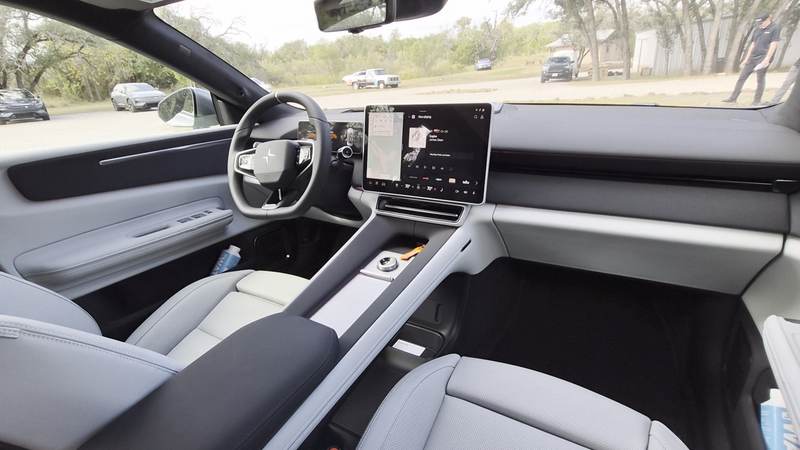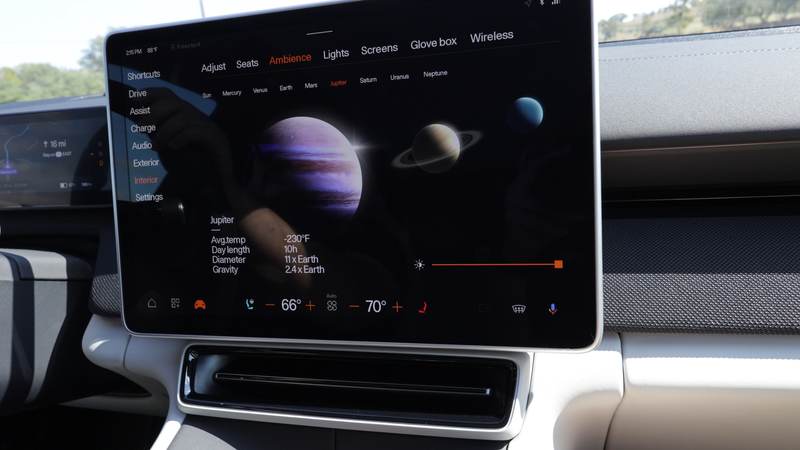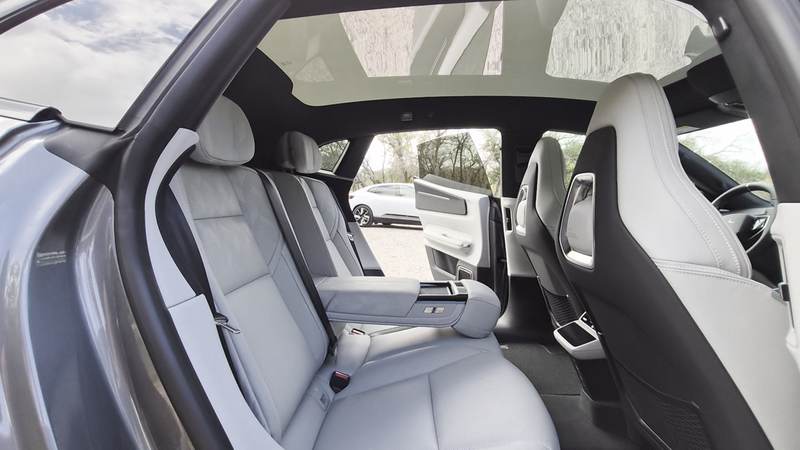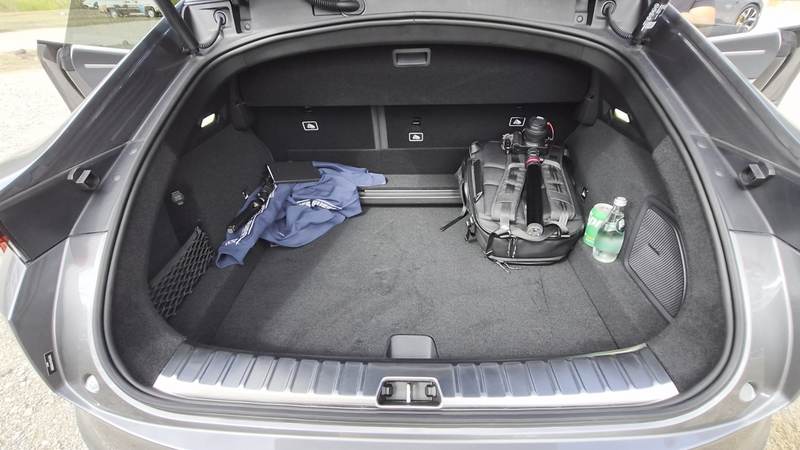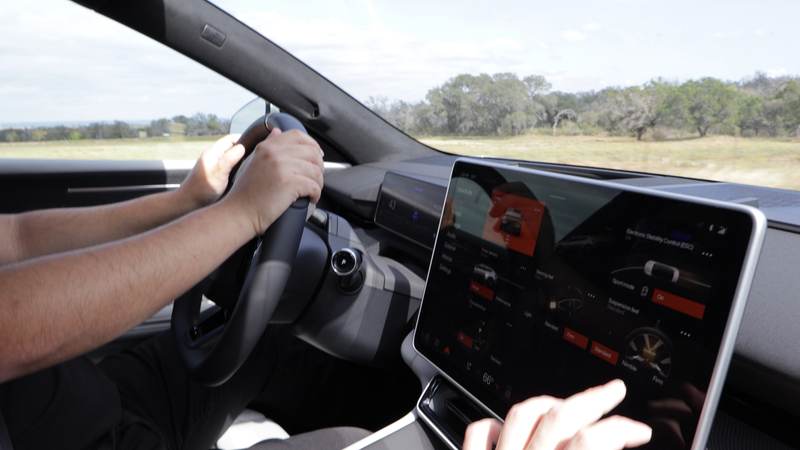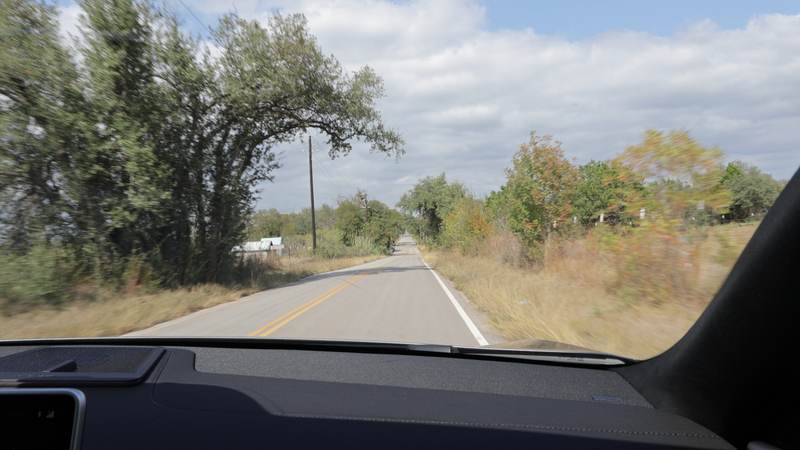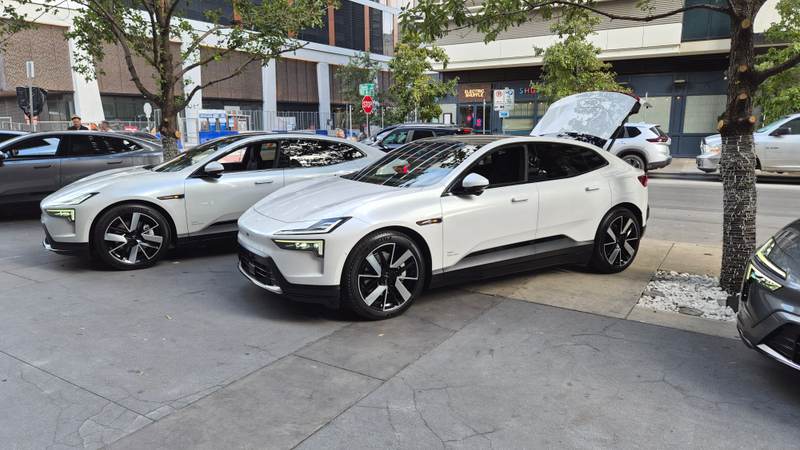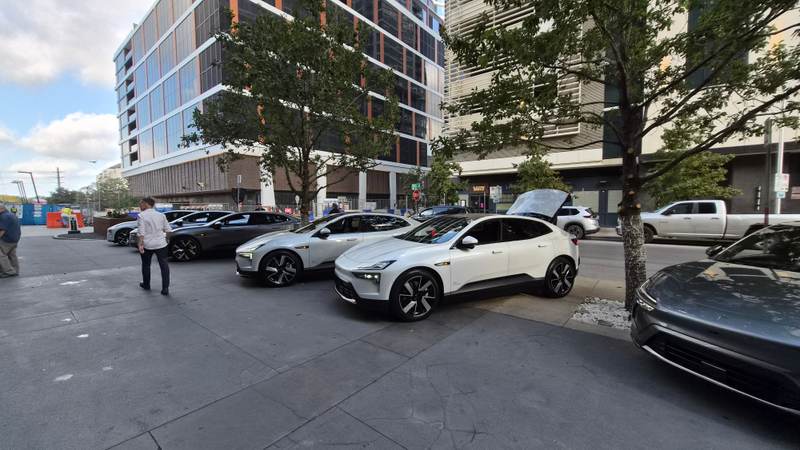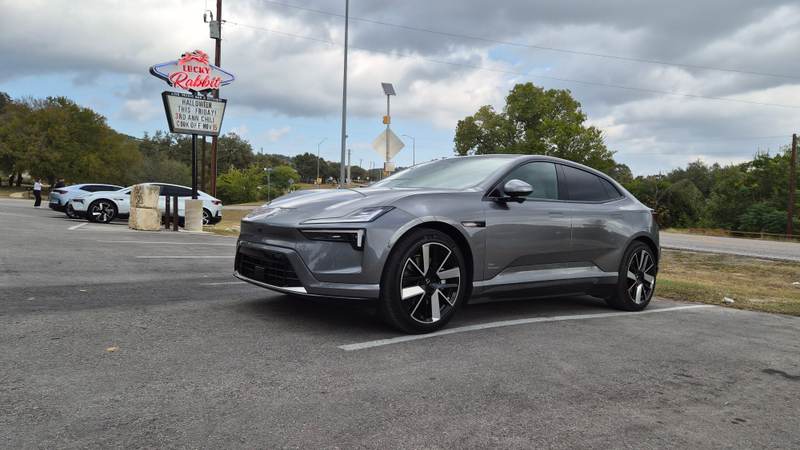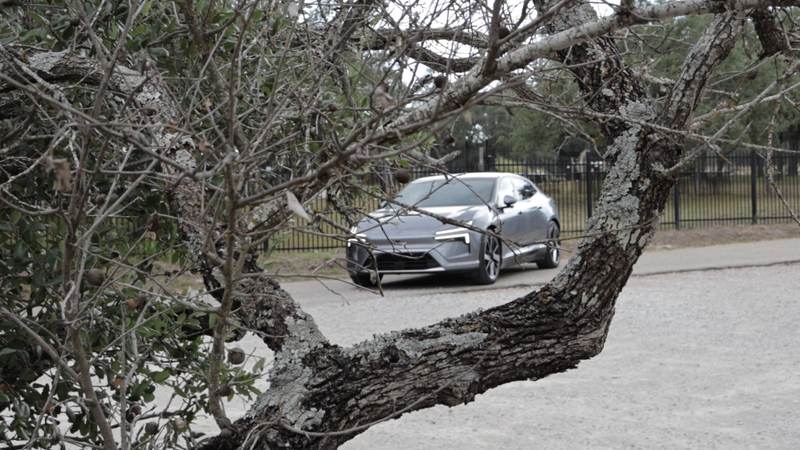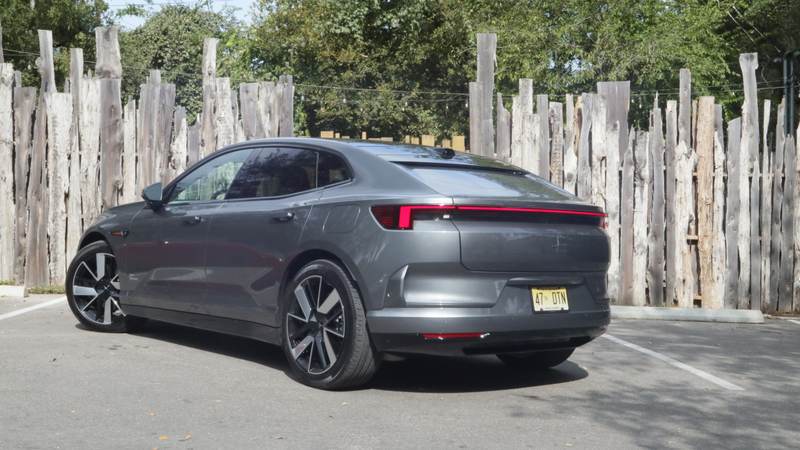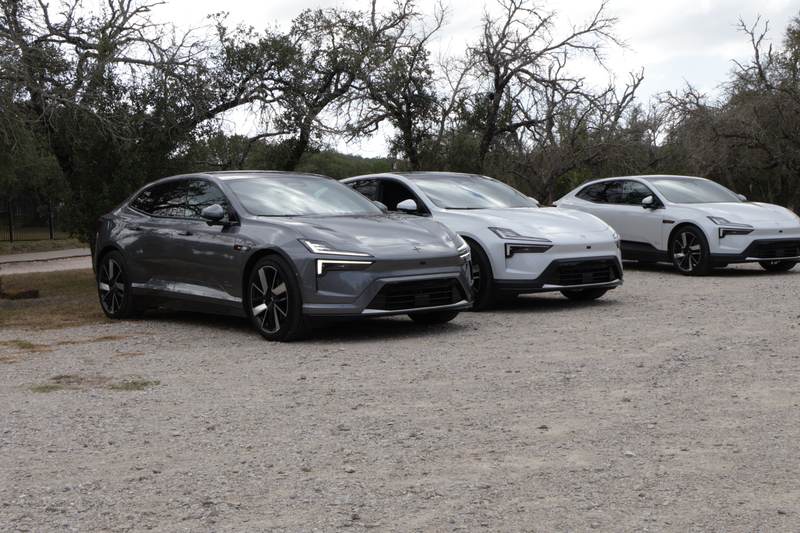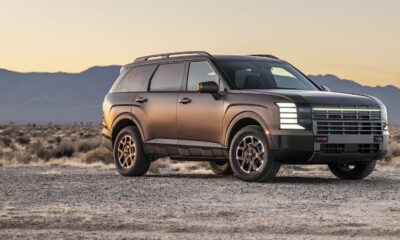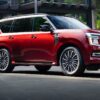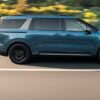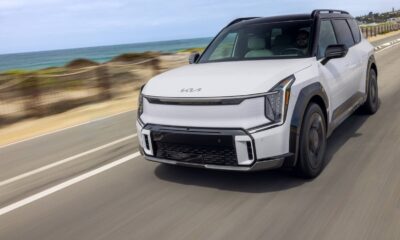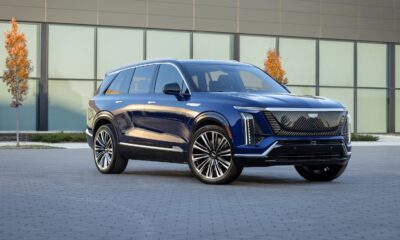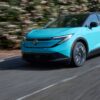Car Reviews
Polestar 4: A Hill Country Awakening
Austin, Scene Setter
Austin is a great place to meet something new. We rolled out from the valet stand of the Van Zandt, with downtown’s glassy soundtrack of scooters and dog walkers in the background, and pointed a convoy of Polestar 4s toward the Texas Hill Country. North first, then a quick jog east as the skyline fell away and the road started to breathe—long sweepers, blind rises, limestone cuts and scrub oak. We swapped drivers at a roadside stop before pushing farther toward Marble Falls and then south for lunch. Then we looped back west into the city to finish the day where it began. A full Texas sampler: downtown city streets, interstate, and the kind of roller-coaster two-lanes that tell you exactly what a chassis is made of.
What Is Polestar Doing Here?
If you still picture bright-blue, track-prepped Volvos, that history matters—but today’s Polestar is its own EV brand with a point of view. The 4—so named because it’s the fourth vehicle the company has released—is a design-forward, sport-leaning crossover with a coupe-like shape, aimed at buyers who want something premium and modern – and doesn’t look like everything else. It’s the boldest expression of Polestar’s Scandinavian design yet.
First Impressions, Then Settings Happen
Our first miles were about getting comfortable in an almost-$80K Swedish EV. The seating position is dialed, forward visibility is clean, and road noise is well managed. Push harder into the Hill Country, though, and our first note was a raised eyebrow. The steering of the 4 felt a little numb, not light but not confidence-inspiring either; that’s not expected from a brand with performance heritage like Polestar. It didn’t spoil the cruise—this thing eats miles—but when the road tightened, we wanted more feel.
Then we did what you should do with any modern performance EV: we went exploring in the menus. With the steering bumped to Firm and the suspension told—politely—to tighten up, the whole car changed its attitude. The Polestar 4 went from polished commuter to playful dance partner. Weight built naturally through the wheel. Body control sharpened. The dual-motor AWD laid down clean, confident thrust out of corners. Same road, same driver, different car. That transformation is the headline of my drive.
The Power Feels Earned
There’s meaningful performance baked in here. Throttle response is crisp without being jumpy, and torque arrives with that right-now EV certainty. What stood out wasn’t a flashy spec sheet number; it was a repeatable pace. Twisty corner after twisty corner through the hills, the Polestar 4 stayed composed, never flustered, never floaty. It likes precision inputs, and when you give it those—while in the right drive mode—it gives you back real pace with very little drama.
Exterior: Robotic, But Pretty
The Polestar 4 looks like it beamed in from six months in the future—sharp, sculpted, and confident. It’s a long, low coupe-inspired crossover with clean surfacing, tight detailing, and a roofline that flows into the tail without apology. Designer Subum Lee calls the look “minimalist with purpose,” and that’s exactly how it comes across: futuristic but not flashy, aerodynamic without looking sterile. The team at Polestar even joked that it’s “robotic—the kind of sexy a humanoid would appreciate.” Honestly, that fits.
Wheel options range from 20 to 22 inches, with available forged alloys and Pirelli P Zero summer tires on Performance Pack models—complete with gold Brembo calipers peeking through the spokes. The stance is wide and athletic, and the low roof gives the 4 a planted, almost sports-sedan profile. Pixel LED headlights with animated light signatures and a glowing Polestar badge add to the drama, while flush e-latch door handles and frameless windows keep everything sleek and uninterrupted.
Color choices like Snow, Magnesium, Thunder, and Midnight play up the Scandinavian restraint, while the optional electrochromic glass roof brings light or shade at the tap of a button. It’s modern and elegant all at once—and during our day in Austin, it turned heads everywhere from downtown to the Hill Country. On a crowded curb outside the Van Zandt, people stopped mid-step just to ask what it was.
The Rear Window That Isn’t
Yes, there’s no traditional rear glass. Instead you get a high-def camera feeding a digital rearview mirror. I heard a few grumbles from other journalists. I didn’t share them. All day, the camera-mirror just…worked. I never caught myself missing a pane of glass. The bonus is in the back: Without a big greenhouse behind your head, the rear seats feel more insulated, more cocooned, and less like the Texas sun has a direct line to your neck.
Cabin: Scandinavian With a Pulse
Step inside the Polestar 4 and it’s clear this is a brand that takes design seriously. The cabin is clean and uncluttered, but never cold or clinical. Materials are thoughtfully chosen—soft where they should be, structured where it counts—and everything feels tightly executed. The layout is unmistakably Scandinavian: simple, functional, but elevated with a sense of calm precision.
The panoramic roof stretches nearly the entire length of the cabin, bathing it in natural light. With the electrochromic feature, you can turn it from clear to frosted at the touch of a button—an elegant way to manage Texas sunshine or add a bit of privacy. Rear passengers are the real winners here; The absence of a rear window makes the second row feel private and insulated, with excellent headroom and a lounge-like sense of space.
Front and center sits the 15.4-inch infotainment display, the brain of the car. Polestar didn’t just slap Android Auto onto a screen—they built an interface that feels like part of the vehicle’s DNA. The design is clean, intuitive, and distinct from other Google-based systems. Even the familiar Google Maps has been reskinned to match Polestar’s aesthetic, making the whole system feel cohesive and intentional. Menus are where you expect them to be, and the response is snappy and fluid.
This is the rare EV interior that feels as much about emotion as it is about function. It’s minimalist, yes—but with warmth and character. Scandinavian design has always been about balance, and in the Polestar 4, that balance finally feels alive.
Practicality, With a Coupe Twist
This is a coupe-profile crossover, so you trade a bit of tall-box utility for those looks. The hatch opens wide, the load floor is friendly, and day-to-day hauling won’t be a problem, but if your life is Costco-plus-kids-plus-baseball-gear, a more upright shape will offer easier vertical stacking behind the second row. The flip side is that the cabin looks and feels special in ways those boxes rarely do.
The Austin Factor
Cars have personalities; places do, too. The Hill Country is a great truth serum for a chassis. Its rhythm rewards confidence and punishes slop. With comfort settings the 4 is calm and collected, gliding through the scenery, happy to hang back. Toggle up the firmness and it meets the road halfway—turn-in tidies up, mid-corner bumps get handled instead of broadcast, and the exit is clean and quick. Back in the city, the 4’s tight packaging and smooth low-speed control made downtown traffic a non-event. It is a wide car and you can feel it downtown. It’s a good Austin companion: stylish at the curb, relaxed when you want it, and sharper than it first lets on when the road invites you to play.
What Stuck With Me
By the time we handed the key back at the Van Zandt, my notes were simple. I like how this car looks. I like how it’s built. I like how it can change character with a couple of taps. I like that the interior feels purposeful rather than trendy, and that the tech is thoughtful instead of showy. I didn’t miss the rear glass, appreciating what its absence provides in extra comfort for the second row. And I appreciated that the Polestar 4 asks you to be involved—choose your setup, pick your road, and it’ll meet you there.
I’ll be honest: Before this trip, Polestar wasn’t really even on my radar. I had a brief go in a previous model years ago and walked away unsure of the mission. After a day in and around Austin, I get it. This is a new, hip company with a firm design compass and the engineering to back it up. There’s polish here, and there’s personality. The 4 feels like the point where those two meet.
That said, Polestar, about the names. The 4 sits between the 2 and 3, which makes sense if you live on the product team, but it’s clunky in the real world. As the lineup grows, that convention will confuse more buyers than it helps. The models deserve a system as considered as everything else you’re doing.
Verdict
The Polestar 4 arrived in Austin looking like a concept that escaped the stage. It left feeling like a fully formed, deeply livable electric crossover that can play both sides; it’s quiet, comfortable daily when you want it; sharp enough to make the Hill Country worth the detour when you don’t. If this is the direction Polestar is headed, count me in for the ride.



